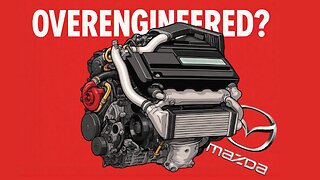Premium Only Content
![How [NASA] space ship work](https://1a-1791.com/video/s8/6/F/p/X/N/FpXNl.qR4e.jpg)
How [NASA] space ship work
A NASA space rocket is a complex and powerful vehicle designed to carry payloads, such as satellites, scientific instruments, or astronauts, into space. These rockets are engineered with advanced technology and a multi-stage design to overcome Earth's gravitational pull and reach the desired orbits or destinations in space. The process involves several stages, each with its own unique functions and challenges.
Launch: The rocket begins its journey from a launch pad on Earth's surface. The first stage contains powerful engines fueled by liquid propellants, such as liquid hydrogen and liquid oxygen or kerosene and liquid oxygen. These engines ignite, generating an enormous amount of thrust that propels the rocket off the ground.
Staging: As the rocket burns through its fuel in the first stage, it becomes lighter and more efficient to shed unnecessary weight. This is achieved by staging, where the used first stage is jettisoned and the second stage ignites. Staging is critical to maximize efficiency and reach the required velocity for achieving orbit.
Second Stage: The second stage continues the ascent into space. It often uses different engines and propellants optimized for the vacuum of space. This stage carries the payload closer to the desired orbit or trajectory, gradually accelerating it to higher speeds.
Payload Deployment: Once the rocket reaches the desired altitude and velocity, the payload (such as a satellite or spacecraft) is released from the second stage. The payload then begins its independent mission in space, whether it's conducting scientific research, communication, Earth observation, or exploration of other celestial bodies.
Optional Additional Stages: For missions that require even higher velocities or specific trajectories, some rockets have additional upper stages. These stages can provide the final push needed to achieve escape velocity or reach distant destinations.
Reusability (Optional): In recent years, NASA has been working on developing reusable rocket technology. Reusable rockets can return their stages back to Earth after deployment, landing vertically on platforms to be refurbished and launched again. This approach reduces the cost of space exploration and makes it more sustainable.
The successful operation of a NASA space rocket involves precise calculations, careful engineering, and rigorous testing to ensure safe and reliable launches
-
 LIVE
LIVE
Wendy Bell Radio
4 hours agoPet Talk With The Pet Doc
218 watching -
 4:45
4:45
PistonPop-TV
8 days agoMazda K-Series V6: Only True Enthusiasts Know About This Engine
2 -
 19:51
19:51
Stephan Livera
2 days ago $3.70 earnedStephan Livera hosts Plan B Podcast in Lugano
18.2K1 -
 1:08:45
1:08:45
DeVory Darkins
21 hours agoLetitia James drops frantic speech after pleading not guilty as Canada gets NIGHTMARE NEWS
96.7K46 -
 1:25:16
1:25:16
efenigson
2 days agoDigital Money or Digital Prison? - Nick Anthony | You're The Voice - LIVE from Lugano PlanB Forum!
19.8K3 -
 13:26
13:26
Cash Jordan
17 hours ago“PORTLAND MOB” Storms ICE HQ… ‘COMBAT’ Troops Respond With EXTREME FORCE
20.2K55 -
 16:00
16:00
Demons Row
15 hours ago $9.49 earnedBIKERS OF FLORIDA 💀🏍️ Outlaws, Warlocks, Mongols & the Wild South
19.8K10 -
 22:01
22:01
Jasmin Laine
18 hours agoTrump’s BRUTAL WARNING Leaves Canada Speechless—America STUNNED
18.6K62 -
 11:42
11:42
China Uncensored
19 hours agoThe Chinese Military Turns Its Gun on Xi Jinping
20.4K30 -
 2:36
2:36
The Official Steve Harvey
18 hours ago $3.87 earnedThis Is Bigger Than Comedy — It’s About Saving Young Men
16.1K3